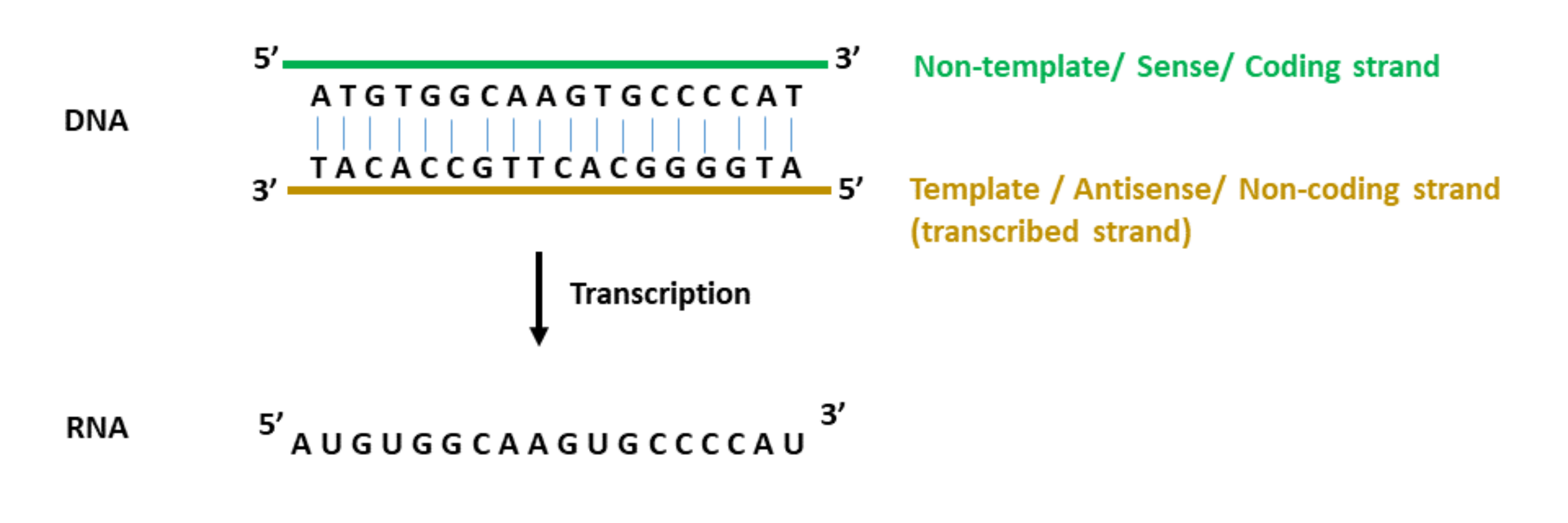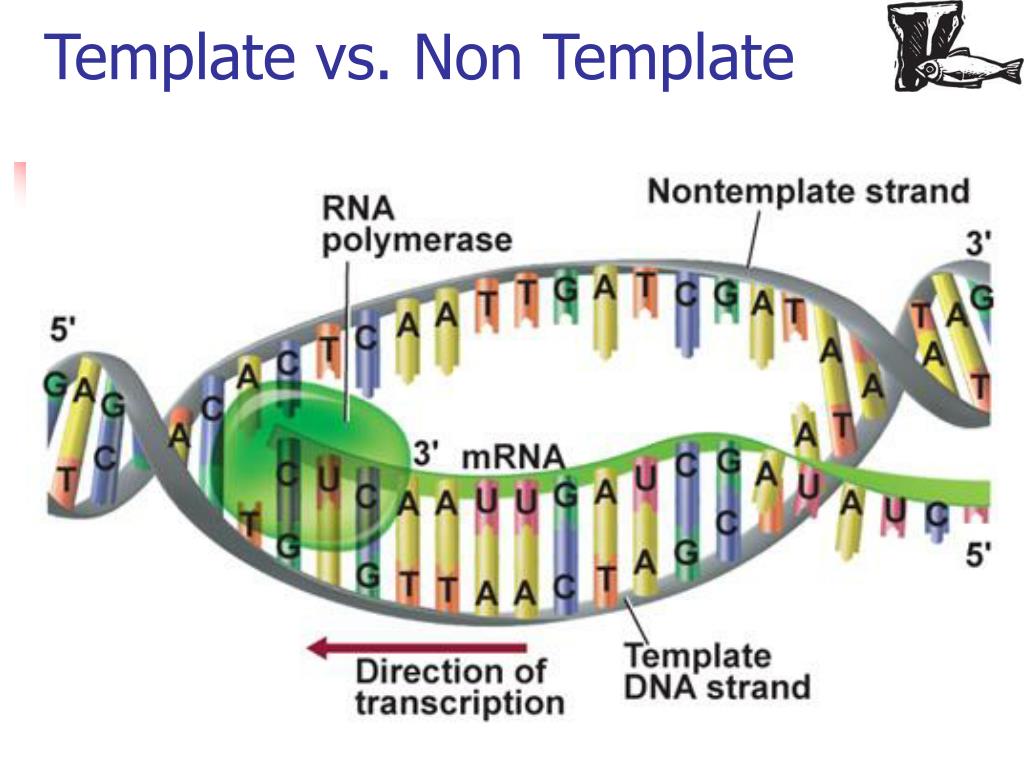Template Strand Vs Non Template Strand
Template Strand Vs Non Template Strand - Coding strand of dna (sense strand) has the same sequences as transcribed rna, except for having thymine in place of rna’s uracil. Web the nontemplate strand is referred to as the coding strand because its sequence will be the same as that of the new rna molecule. Web july 21, 2021 6 mins read what is dna template strand? This strand is also called the coding. Template strand is directed in the 5’ to 3’ direction. Web transcription uses one of the two exposed dna strands as a template; The direction of the template strand is in 3’ to 5’, whereas the coding strand shows opposite directional polarity, i.e. In most organisms, the strand of dna that serves as the template for one gene may be the nontemplate strand for other genes within the same chromosome. The template strand along with the coding strand is evident during transcription when the dna is unwound because of the dna helicase. The coding strand has the same nucleotide sequence as mrna except that.
Coding strand of dna (sense strand) has the same sequences as transcribed rna, except for having thymine in place of rna’s uracil. The coding strand functions to determine the correct nucleotide base sequence of the rna strand. Is the lagging strand the template strand? The template strand is the one that rna polymerase uses as the basis to build the rna. The term template strand refers to the dna sequence that can duplicate itself during mrna synthesis. The rna product is complementary to the template strand and is almost identical to the other dna strand, called the nontemplate (or coding ) strand. This strand is called the template strand. Web the nontemplate strand is referred to as the coding strand because its sequence will be the same as that of the new rna molecule. The coding strand has the same nucleotide sequence as mrna except that. Web dna template strand and the creation of its complementary strand the primary enzyme involved in this is dna polymerase which joins nucleotides to synthesize the new complementary strand.
This strand is also called the coding. The template strand is the side of the dna molecule that stores the information to be transcribed into mrna. What is meant by the template vs. Web this template strand is called the noncoding strand. This strand is called the template strand. Web biology questions and answers. Dna polymerase also proofreads each new dna strand to make sure that there are no errors. Coding strand of dna (sense strand) has the same sequences as transcribed rna, except for having thymine in place of rna’s uracil. The rntps or the ribonucleotide triphosphates get aligned according to the base pairing of watson crick on the template. Coding strand is also called a template strand which gets transcribed to rna.
Difference Between Template and Coding Strand
Web july 21, 2021 6 mins read what is dna template strand? The template strand is the side of the dna molecule that stores the information to be transcribed into mrna. The coding strand serves as a template for producing complementary rna. In most organisms, the strand of dna that serves as the template for one gene may be the.
Template vs. Nontemplate (Noncoding vs. Coding strand of DNA) YouTube
What is meant by the template vs. Web it is presented in the 5' to 3' direction. The nontemplate strand is referred to as the coding strand because its sequence will be the same as that of the new rna molecule. Is the leading strand 5 to 3? Web this template strand is called the noncoding strand.
Common misconceptions in biology Making sense of the sense and
The rna product is complementary to the template strand and is almost identical to the other dna strand, called the nontemplate (or coding ) strand. Web the nontemplate strand is referred to as the coding strand because its sequence will be the same as that of the new rna molecule. The coding strand has the same nucleotide sequence as mrna.
Which of the Following Is the Template for Transcription AlizahasClarke
The template strand along with the coding strand is evident during transcription when the dna is unwound because of the dna helicase. The rna product is complementary to the template strand and is almost identical to the other dna strand, called the nontemplate (or coding ) strand. The coding strand has the same nucleotide sequence as mrna except that. Template.
Coding NonCoding Sense Antisense Template and NonTemplate Strands
What is meant by the template vs. Web this template strand is called the noncoding strand. Web transcription uses one of the two exposed dna strands as a template; The coding strand serves as a template for producing complementary rna. Coding strand is also called a template strand which gets transcribed to rna.
WiFi Boosters, Repeaters and Range Extenders A Deep Dive
The rna product is complementary to the template strand and is almost identical to the other dna strand, called the nontemplate (or coding ) strand. In most organisms, the strand of dna that serves as the template for one gene may be the nontemplate strand for other genes within the same chromosome. It is synthesized in fragments. Web this template.
Coding Strand of DNA bartleby
The template strand and the. It is synthesized in fragments. The nontemplate strand is referred to as the coding strand because its sequence will be the same as that of the new rna molecule. Template strand is directed in the 5’ to 3’ direction. This template strand is called the noncoding strand.
Template And Nontemplate Strand Flyer Template
Web in this mcat question of the day, we will be taking a look at the key differences between the template strand and the coding/sense strand. The copy of the template strand is read by ribosomes, which then produce a. The template strand and the. This strand is called the template strand. Web the nontemplate strand is referred to as.
Difference between Sense Strand and Antisense Strand of DNA Dna
The template strand is the one that rna polymerase uses as the basis to build the rna. The nontemplate strand is referred to as the coding strand because its sequence will be the same as that of the new rna molecule. The copy of the template strand is read by ribosomes, which then produce a. Is the leading strand 5.
The coding strand of DNA is 5'AATTCAAATTAGG3'
Web dna template strand and the creation of its complementary strand the primary enzyme involved in this is dna polymerase which joins nucleotides to synthesize the new complementary strand. This strand is also called the coding. The direction of the template strand is in 3’ to 5’, whereas the coding strand shows opposite directional polarity, i.e. The coding strand functions.
Is The Lagging Strand The Template Strand?
The rntps or the ribonucleotide triphosphates get aligned according to the base pairing of watson crick on the template. The nontemplate strand is referred to as the coding strand because its sequence will be the same as that of the new rna molecule. The coding strand serves as a template for producing complementary rna. Web it is presented in the 5' to 3' direction.
This Strand Is Called The Template Strand.
Template strand is directed in the 5’ to 3’ direction. This template strand is called the noncoding strand. Dna polymerase also proofreads each new dna strand to make sure that there are no errors. Web dna template strand and the creation of its complementary strand the primary enzyme involved in this is dna polymerase which joins nucleotides to synthesize the new complementary strand.
The Template Strand Is The Side Of The Dna Molecule That Stores The Information To Be Transcribed Into Mrna.
Web this template strand is called the noncoding strand. Web by perrine juillion / july 2, 2019. The direction of the template strand is in 3’ to 5’, whereas the coding strand shows opposite directional polarity, i.e. The template strand is the one that rna polymerase uses as the basis to build the rna.
Is The Leading Strand 5 To 3?
Antisense strand or minus strand: This strand is also called the coding. What is meant by the template vs. A dna template strand generally refers to the strand which is used by the enzyme dna polymerases and rna polymerases to attach with the complementary bases during the process of replication of dna or at the time of transcription of rna respectively.









